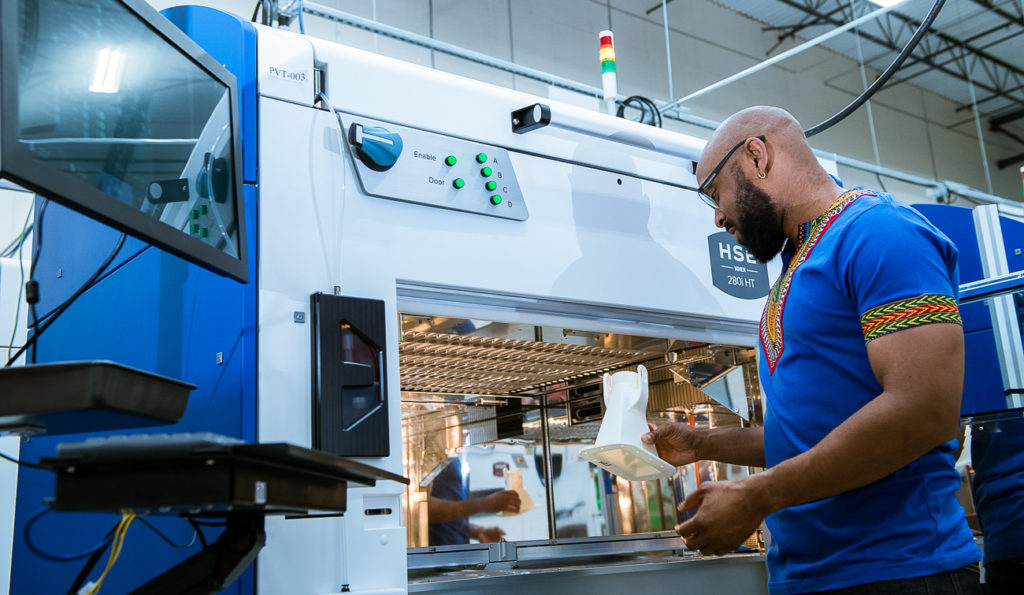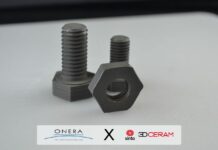Whether it is leveraged for emergency replacement of critical parts, manufacturing of unmanned platforms, or innovation in time of need, Additive Manufacturing has proven to be a good candidate for expeditionary manufacturing. While the main objective is to ensure that the warfighter rapidly produces solutions on demand, one of the main challenges to address, to achieve this objective, is often to ensure repeatable processes and B-basis allowables — the minimal acceptable mechanical properties required to design a part with a specific material —.
As the 6th Annual Military Additive Manufacturing Summit approaches, we found it interesting to discover how the DoD is working to integrate AM technologies in order to supply durable, affordable equipment & parts. As you may know, digging into the DoD’s use of AM is often quite complicated due to the very conservative nature of this vertical industry. Sometimes, an experience shared by an AM company that conducts some activities in the field might be enough to shed light on some of the grey areas. That’s the reason why we caught up with Elisa Teipel, Chief Development Officer of Essentium, to understand where the market is headed.
Essentium’s journey in the Defense Industry

Essentium is probably acknowledged today for its High-Speed Extrusion (HSE™) Printing Platform and IDEX-based machines, but the company’s journey started in materials. As a strong believer in open materials platforms, the US-based company has worked hard to enable the processing of any brand of materials without additional paywalls, providing this way access to the data needed for in-depth analysis.
Furthermore, as far as the HSE™ Printing Platform is concerned, Teipel said it was designed to provide two essential factors to military applications’ success: agility and speed – which “will become exponentially important if additive manufacturing (AM) is to be fully realized in a near-peer conflict.”
Essentium’s experience in the defense industry might seem new as it started in 2019 as part of the 2019 National Guard Innovation Competition but it is definitely one of the most uplifting any AM company can dream of. Indeed, the Essentium team did not only learn with various teams at the Defense Innovation Unit, AFWERX, ARCWERX, Air Force Rapid Sustain Office, and Air Force Research Labs, they also learned much in their approach with AM and the interactions with the various parts of the DoD.
Moreover, this experience was also an opportunity to determine how and where one can best apply Essentium’s portfolio of technological solutions to meet the requirements of the DoD. At the manufacturing level, custom jigs, fixtures, and tools are always the first applications mentioned when it comes to cutting down on aircraft maintenance times, but the truth is, Essentium is also a best fit when users are looking “to easily switch from prototype to production so they can create several iterations quickly.”
“There have been use cases creating customized shipping inserts that reduce damage to weapons and electronics in transit. The Air National Guard has integrated the Essentium HSE 3D Printer with other tools to reduce time to part. We’ve seen some great examples of building readiness through the development of training aids for sensitive or expensive components. We developed a proof of concept for a printed winter weather traction cleat that improved the capability of service members operating in austere winter environments. With high-speed extrusion, you can equip an entire squad, platoon, shop, or base with those innovations if needed. Again, our speed lets the user create more iterations and increase user throughput, turning 3D printing from a one-off part producer and into something that can drastically increase unit and individual readiness”, Teipel comments.
On the other hand, no matter how ready an AM technology is, it can only be leveraged if the specific plans of the DoD allow for it. Remember, the US Department of Defense (DoD) released its first-ever comprehensive Additive Manufacturing (AM) Strategy in January 2021. Some of the key points in this agenda included the development of qualification and certification guides, transparent exchange of ideas to foster innovation, new designs and the delivery of rapid capability; the development of a workforce of practitioners, designers, technicians, and acquisition, or even the establishment of guidance to their expeditionary and point of need sources.

Beyond all of these steps, Teipel believes the first step in making this agenda a reality is exposure.
“More commanders and warfighters of various branches need to be exposed to the technology and building a foundation for the future. Risk aversion is understandable and the safety of our servicemembers is paramount. However, we risk losing our edge and falling into historical technological adoption shortfalls if we wait for the technology to be “perfect” before beginning widespread use. Additive manufacturing and 3D printing have been on the military’s radar for close to a decade. Recalling the “crawl, walk, run” mentality, I think it’s time to move out of the crawl phase. Additive engineering and 3D printing should be a capability available to commanders at every level and we won’t fully realize it’s potential until we make that jump”, she states.
“We know that the warfighter of today and tomorrow will need industrial level 3D printing capability that exceeds what is currently provided to them. Essentium is going to push forward alongside them, exploring at the edge of what’s possible, to bring forward solutions. Additive manufacturing and 3D printing is not going to be the answer to everything, but we already know it’s the answer to some things. In the case military readiness and operational capability in combat, those “some things” can make the difference between victory and defeat. We are committed to working with Defense partners, addressing issue right now, but also inventing technologies and creating platforms that will arm the warfighter with what they need to succeed”, she concludes.
Exlusive content created in partnership with the Defense Strategies Institute.
Remember, you can post job opportunities in the AM Industry on 3D ADEPT Media free of charge or look for a job via our job board. Make sure to follow us on our social networks and subscribe to our weekly newsletter : Facebook, Twitter, LinkedIn & Instagram ! If you want to be featured in the next issue of our digital magazine or if you hear a story that needs to be heard, make sure to send it to contact@3dadept.com






